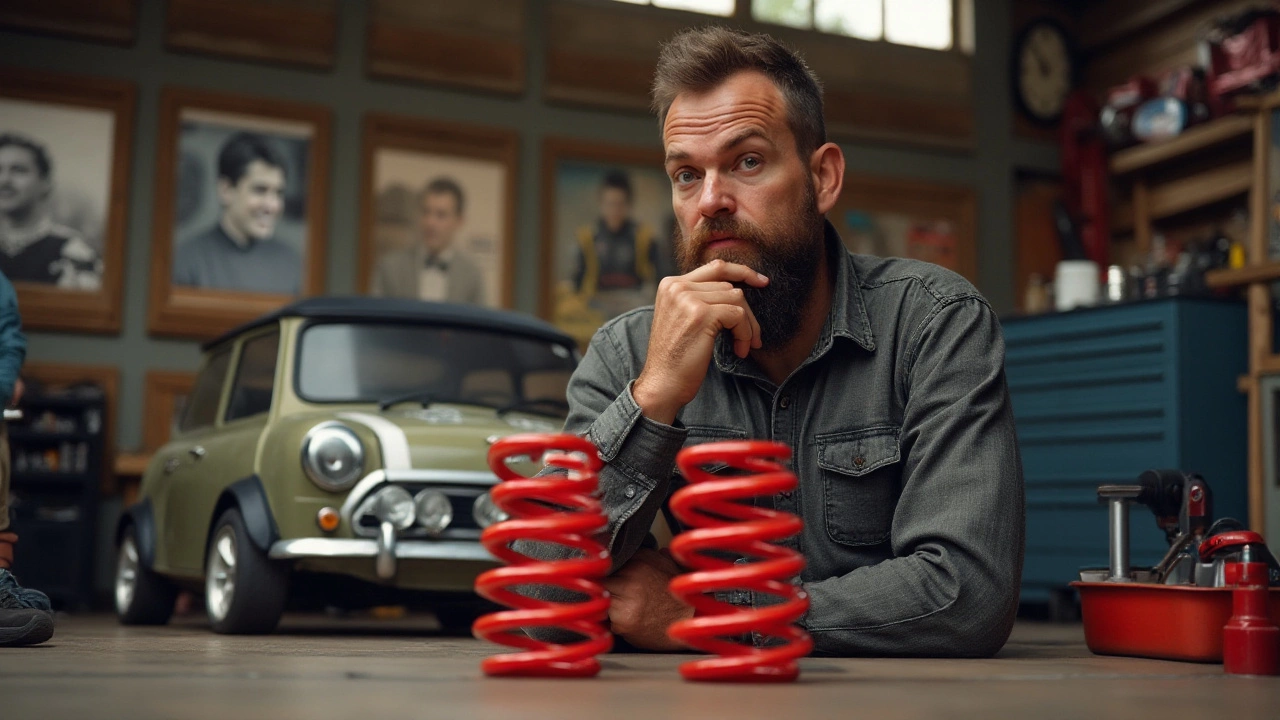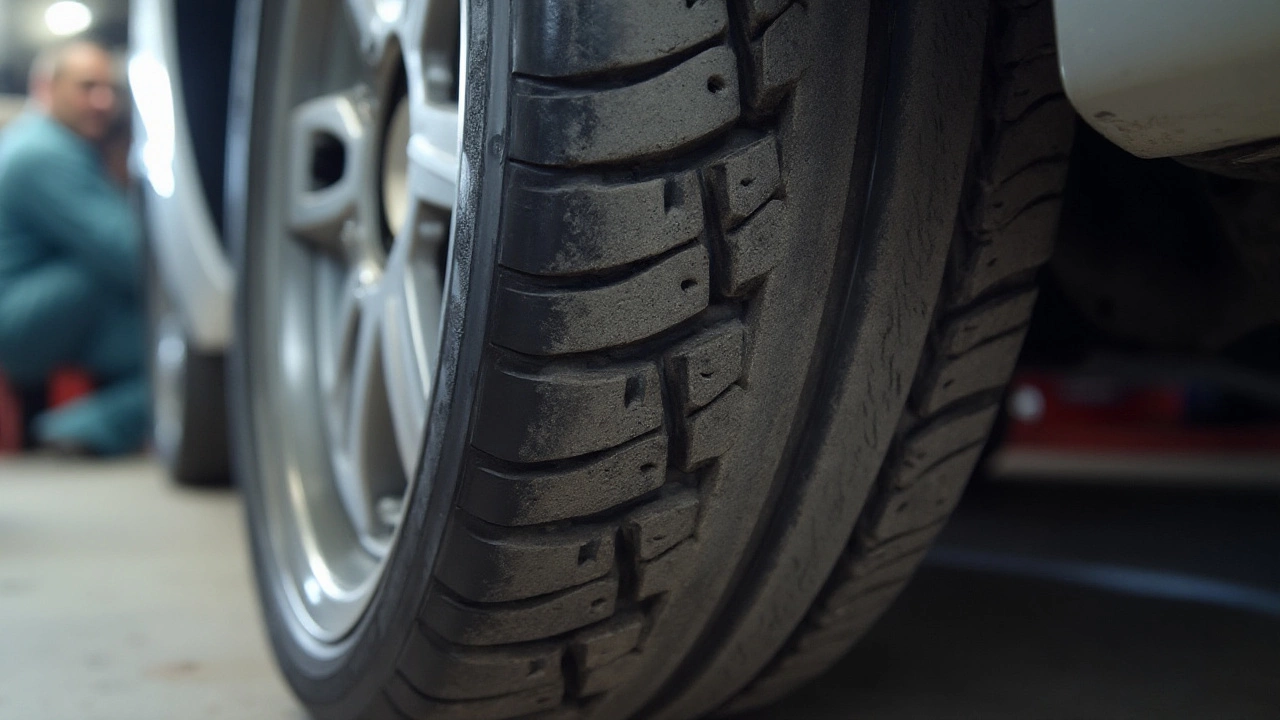Lowering springs are often the go-to upgrade for car enthusiasts eager to enhance their vehicle's aesthetics and performance. By reducing the ride height, cars can achieve a sportier look and improve handling. Yet, as with any modification, they come with a set of challenges that should not be overlooked.
While the promise of sharp turns and sleek appearances is attractive, lowering springs can significantly alter the dynamics of a vehicle. With this modification, there are implications for ride comfort, the longevity of the suspension system, and the integrity of other components. It’s essential for anyone considering this upgrade to be well-informed and weigh the pros and cons carefully.
Exploring these effects in depth will arm you with the knowledge needed to decide if lowering springs align with your driving style and goals. This deep dive will explore the nuances of installing lowering springs and the tips for maximizing benefits while minimizing drawbacks.
- Introduction to Lowering Springs
- Impact on Ride Quality and Comfort
- Compatibility with Shock Absorbers
- Effects on Vehicle Handling and Performance
- Considerations and Tips for Installation
Introduction to Lowering Springs
In the world of automotive enhancements, lowering springs stand out as a favoured choice among enthusiasts looking to modify their ride. At their core, lowering springs are specifically designed coil springs that shorten the distance between the chassis and the ground, effectively reducing the vehicle's ride height. This change is not merely cosmetic; it can significantly alter the vehicle's dynamics, offering potential improvements in handling, aerodynamics, and stability. The appeal lies in the promise of a sportier stance and the ability to navigate corners more aggressively, which has long enticed drivers eager for a taste of track-like performance in their daily commute.
When examining why lowering springs are so popular, one must consider the psychological allure of a vehicle that hugs the road more closely. The aesthetic transformation alone can be striking, giving the car a more aggressive and performance-oriented look. Many car owners find joy in customizing their vehicles, expressing individuality through these modifications. However, the impact of lowering a car goes beyond looks. By lowering the center of gravity, these springs can potentially enhance a vehicle's cornering capabilities. This transformation can lead to an increased pleasure of driving, as the car may feel more responsive to steering inputs, encouraging a connection between the driver and the road.
It's important, though, to delve deeper into the mechanics behind these improvements. The reduced distance between the ground and the car can indeed have beneficial effects on the car's stability and handling. There is a tangible shift in how weight is distributed and how forces are applied, particularly during sharp turns and sudden stops. Additionally, by lowering the height, the car's aerodynamic profile can improve slightly, reducing drag and enhancing fuel efficiency under certain conditions. However, the alterations in dynamics also mean that the vehicle's suspension system is under increased strain. Components wear differently, and the ride quality can be impacted due to a reduced capacity to absorb shock from road imperfections.
"For many drivers, the fine balance of performance and comfort is key. Lowering springs can provide that enhanced feel of the track, but it's essential to weigh this against ride quality changes," notes automotive expert John Reynolds from Car Mechanics Quarterly.
There is also the question of compatibility. Not all lowering springs are created equal, and finding the right fit for your vehicle is critical. Compatibility issues can arise, particularly with the car suspension system and stock shock absorbers. It is recommended to pair lowering springs with performance-oriented shock absorbers designed to handle the different dynamics presented by the lowered stance. Additionally, ensuring the correct installation is paramount, as improper setup can lead to premature wear and potential safety issues.
As you contemplate if lowering springs are the right choice for your vehicle, consider what is most important to you in a driving experience. The balance between aesthetics, vehicle handling, and ride quality are all vital aspects to weigh. By understanding the ins and outs of this modification, you can make an informed decision that aligns with your automotive passions, ensuring that each ride is a reflection of your personal style and preferences.
Impact on Ride Quality and Comfort
Lowering springs have become a popular choice for many car enthusiasts seeking to enhance their vehicle's aesthetics and handling capabilities. However, it's crucial to understand that these modifications can significantly impact ride quality and comfort. One of the primary trade-offs involves a firmer suspension setup, which means that road imperfections such as bumps and potholes can be felt more acutely inside the cabin. This can lead to a less comfortable ride, especially on rough or uneven surfaces, where the car tends to absorb less of the shock compared to a stock suspension system.
Another aspect to consider is the change in suspension geometry when lowering springs are installed. While the car suspension might improve handling at higher speeds, it can also lead to an increase in the frequency of bottoming out, where the car tires hit the fender wells, especially during aggressive driving or when carrying heavier loads. This not only diminishes comfort but can also result in potential damage over time if not addressed properly. Some folks might find this trade-off acceptable, especially if their priority is a sporty driving experience, but it's not for everyone.
It's also important to understand that different brands and types of lowering springs can affect ride quality differently. Some are designed to maintain a balance between performance and comfort, while others lean heavily towards enhancing vehicle dynamics at the expense of everyday driveability. Those who drive primarily in urban environments may find the stiffer setup less forgiving on city streets, unlike more rural settings where smooth roads might make the difference less noticeable.
Interestingly, according to a survey by Performance Racing Industry, about 55% of car owners who opt for suspension mods do report a decrease in their satisfaction with ride comfort. But not every driver considers this a downside; some may regard the tactile feedback from the road as an enhancement to their driving experience. As car enthusiast and author Pete Cress put it,
"Sacrificing a little comfort is a small price to pay for sharper cornering and improved steering response."
For those not ready to compromise on comfort, adjustable suspension kits, albeit more expensive, offer a more flexible solution. They allow for seasonal adjustments to keep the ride plush when necessary or stiffer when desired for spirited drives. Ultimately, decisions regarding lowering springs should take into account personal preferences, driving conditions, and how the trade-offs between comfort and performance align with one's driving priorities.

Compatibility with Shock Absorbers
When considering lowering springs as part of your vehicle's suspension overhaul, one of the critical elements to focus on is how well these springs pair with your existing shock absorbers. The harmony between springs and shocks is crucial for maintaining the vehicle's performance, ride quality, and durability. Lowering springs, as the name suggests, reduce the ride height of the vehicle, which consequently affects the natural resting position of the shock absorbers. Standard shocks are typically not designed to operate optimally at these reduced heights. The reduced travel can compromise their ability to absorb shocks properly, leading to a harsher ride and possibly even damage the shocks over time.
The mismatched setup can be particularly stressful for the shock absorbers when the car encounters potholes, speed bumps, or uneven surfaces at high speeds. This not only reduces the effectiveness of the suspension system but can also lead to premature wear and tear of the components, increasing the long-term maintenance costs. It's essential to consider purchasing shocks specifically designed for use with lowering springs, often referred to as "short stroke" shocks, which are optimized to function within the new lowered range of motion.
An interesting fact to note is the varied impact of lowering springs and stock shocks on different vehicle models. For instance, vehicles that are inherently designed with sporty handling in mind might cope better with basic lowering kits than standard sedans or SUVs. However, even in performance models, using the appropriate shocks ensures that the designed harmony in handling is preserved. Also, many vehicle warranty agreements might not cover suspension damages due to modifications with non-compatible parts. This makes it doubly important for enthusiasts to deliberate on compatibility before installation.
Mark Williams, a respected automotive engineer notes,
"When you choose the right combination of springs and shocks, you're not just adjusting the height; you're recalibrating the whole driving experience. It's about finding that sweet spot where aesthetics meet performance."His insights underscore the importance of considering both aesthetic and performance angles when dealing with suspension modifications. Ignoring these considerations doesn’t just compromise the driving feel but could potentially lead to costly mechanical issues down the road.
Industry experts often recommend investing in complete suspension kits that bundle lowering springs with compatible shock absorbers. These kits are designed to work in harmony, ensuring that both the ride quality and vehicle handling are improved rather than impaired. When done correctly, the upgrade not only enhances the visual appeal of the vehicle but can also offer improved cornering at reduced body roll—a win-win for the driving enthusiast.
Effects on Vehicle Handling and Performance
When it comes to enhancing a car's handling, lowering springs can be both a blessing and a caution. By lowering the vehicle's center of gravity, these springs can sharpen the steering response, reducing body roll during sharp turns and giving drivers a more connected feel to the road. This modification often results in tighter cornering, making it popular among track enthusiasts and those who crave a little extra flair in the everyday drive. However, the changes are not purely positive. While there is the promise of improved handling, it's essential to remember that every car is designed with a particular suspension geometry in mind. Altering this with lowering springs without considering other factors might upset the balance manufacturers worked hard to achieve, sometimes leading to undesirable understeer or oversteer, depending on the car's weight distribution and drivetrain layout.
An interesting point to note is about the effects on braking performance. By enhancing the grip on the road, these springs can sometimes improve braking efficiency slightly, due to reduced nosedive during heavy braking. However, if installed incorrectly, they might also lead to premature wear on the remaining suspension components, struts, or even tires due to the increased stress they have to endure. Furthermore, it's crucial to consider that while a lowered vehicle can reduce aerodynamic drag, it might also lead to increased susceptibility to bottoming out over speed bumps or uneven surfaces, which is less than ideal for daily driving on unpredictable roads. Owners should also be aware of the potential for altered camber angles, often leading to unusual tire wear patterns that demand more frequent maintenance checks.
There's also a discussion to be had around ride comfort. By their nature, lowering springs tend to have a higher spring rate to prevent the car from hitting the bump stops over bumps, which can make the ride stiffer and less forgiving over rough terrain. It's a trade-off between sportiness and comfort, one that each driver must carefully weigh. In the words of automotive engineer Mike Kojima, who once commented, "The real art is in finding the balance between lowered stiffness and the compliance needed to handle real-world roads." Indeed, the impact of these springs extends beyond just handling, deeply intertwining with the overall driving experience, influencing everything from the tactile feedback of the steering wheel to the level of vibration felt through the seat.

Considerations and Tips for Installation
When it comes to installing lowering springs on your vehicle, thorough research and proper planning are your best allies. It’s crucial not only to understand the installation process but also to consider the broader impact on your car's performance and your personal driving experience. First and foremost, take a close look at the type of car you own and its unique suspension setup. Different vehicles have varying designs and complexities, and what works for one may not for another. Choosing the right springs involves understanding your vehicle's weight distribution and the intended use of your car, whether it’s for daily commuting or weekend track racing. It's noteworthy that lowering more than the manufacturer’s recommendations can lead to issues like bottoming out or reduced shock travel.
Before diving into installation, gather all necessary tools and prepare your workspace. Safety should always be a priority, so consider investing in a durable set of jack stands and a hydraulic floor jack to secure the vehicle effectively. It’s also beneficial to have a torque wrench on hand to ensure all nuts and bolts are fastened to the correct specifications. Installation typically begins by removing the old springs, which can be a challenging task, especially if they've been on the vehicle for years. Having a spring compressor is vital when working with coil springs to prevent any potential accidents. The importance of patience during this process cannot be overstated, as rushing can lead to mistakes or injuries.
An alignment check is a post-installation necessity. Lowering the car changes the suspension geometry, affecting steering and tire wear. Visiting a trusted shop for a professional alignment can preserve the lifespan of your tires and ensure optimal handling post-lowering. Plus, the settings can be adjusted to tailor the driving feel, whether you're looking for long highway trips or spirited backroad drives. Adjusting camber, caster, and toe settings might be needed to bring everything back into balance. Keeping an eye on elements such as wheel bearings and bushings is also wise, as these components could endure more stress and wear more quickly.
It's often suggested by experienced car enthusiasts and mechanics alike to break in your lowering springs.
"Let your suspension settle. New springs need time to compress and sit after installation," says Tom Merrick, a veteran automotive technician. "This helps with ride height variance and improves performance over time."This involves a period where the springs adjust to the vehicle's weight, which could take a few hundred kilometers. Afterward, another alignment session might be needed to fine-tune the setup as desired.
For those not inclined to perform the installation personally, engaging professional services can save time and ensure precision. Finding a suspension specialist familiar with your vehicle type is invaluable. They can provide insights you might not be aware of, ensuring each component compliments the new spring setup efficiently. This is particularly beneficial if modifications like camber kits or adjustable control arms are introduced during the process, which might require more advanced tuning skills.
Finally, ensure to maintain your suspension setup regularly. Changes to the suspension can alter the dynamic loads experienced by other parts of the vehicle, necessitating more frequent checks for loosening or wear. Periodically inspecting the suspension system ensures everything is secure and functioning as expected. This vigilance helps to savor the enhanced aesthetics and improved handling, making your investment in lowering springs worthwhile over the long haul.




